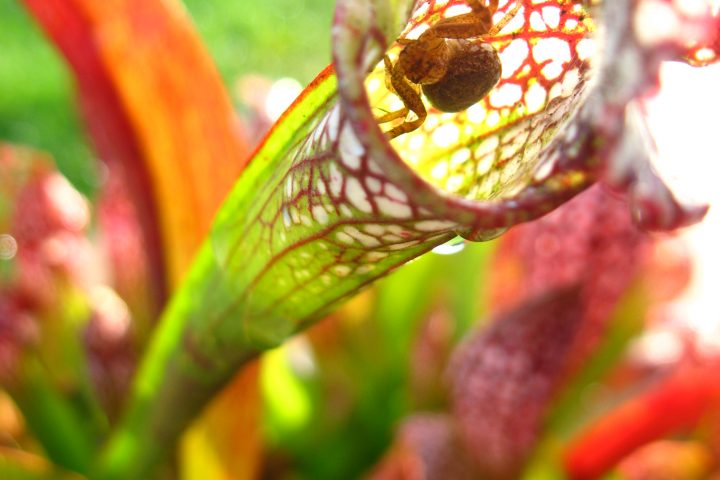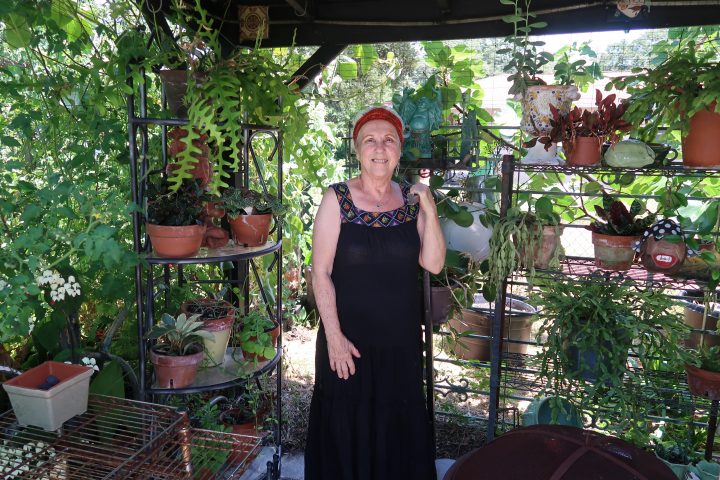
After a thirty five minute drive from Ransomville to my Tonawanda home, I had a problem. Myself and two friends had picked up two boulders and it was time to place them in my yard and start landscaping. Tyler drove the pickup truck in the backyard. The three of us pushed the first rock, after 10 minutes, out of the vehicle and it splashed down into the earth where it will stay for the next half dozen homeowners.
He then drove the truck to the front and we pushed the second boulder. After 10 minutes it had moved six inches.
It moved six inches, but it was in the wrong direction. Not sure how that happened. So after using 2 x 4’s as a lever and gathering a herd of neighbors as spectators, the boulder hit ground close to an hour after we started. The 90 degree day, with no clouds in the sky, was just an added bonus.
A massive rock is now in my front yard a few feet from the sidewalk, with annuals and perennials growing around it. Can you guess what all the dogs like to do when they walk by this olfactory beacon? It’s as if the boulder calls to them, “Pee on me and my plant friends.”
When unsuspecting humans walk by with their canines they are often jerked back as their dogs stop to smell the flowers, among other things. Learning how to walk a dog using positive reinforcement not only important for their safety; it is often the law in many cities.
Using positive reinforcement (adding something they like) to train this behavior will be a pleasant experience for the dog and highly effective for the owner. This is very important as being restrained, tugged or pulled on could turn this fun form of exercise into something very negative.
Before applying the collar and leash encourage your dog to sniff the items. Smell is an important way for dogs to gather information. Remember that they are not toys and chewing or pulling on them should be discouraged.
Retractable leashes are not great to use in the beginning. They cause unclear communication – sometimes the dog can go 3 feet, and other times 15 feet. You will want to start with the least amount of distraction possible. Indoors or in a quite backyard are suitable starting points.
Although walking on a leash is a great form of exercise, tiring the dog before you go out will slow them down, making them less inclined to pull. We should set them up to succeed; as they were not born knowing how to walk with a leash. Traditionally the dog is on the left and if you are walking against the traffic, you are in-between the cars and your dog.
With the equipment on and the leash in your right hand, encourage your dog to stand, sit or approach your left leg. You can do this by patting your left knee, showing a treat or calling them over. Do not pull your dog over, as this can injury them and also associate the leash with discomfort. Give the dog a treat as they approach your leg.
With your dog by your side you can take a few steps and reward. As soon as the dog eats his treat, take a few more steps and reward. Only going a few steps at a time will keep your dog paying attention since they are anticipating a treat. If your dog lunges stop were you are and call your dog back to your left knee and reward.
It is also important that your dog isn’t tripping over their own feet because they are staring at the treats. When you walk, keep the treats away from your dog’s nose by leaving them in your treat pouch or somewhere waist high, so they are out of mind.
After you can successfully start, stop and go a few feet many times, you can increase the distance between the rewards. Walking in large squares or back and forth on an imaginary line will test how in sync you and your canine companion are. If the two of you are coordinated then a few distractions at a time can be added. Once you can walk ten steps between treats, you should mix up the reinforcement by giving treats at variable increments (at the 7,12,10,4,17 step mark).
If your dog starts jumping up, ignore the behavior and wait until they are walking normal and reward two or three steps after the jump.
Learning how to walk a dog using positive reinforcement provides an outlet for your dog, helps with overall training and fulfills a natural roaming instinct. With positive reinforcement training you and your dog will be able to happily walk down the sidewalk, focused on each other, ignoring the largest of distractions, including hundred pound boulders.



